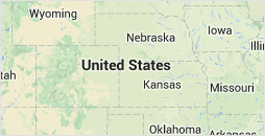Emily Clarke
PHONE NUMBER : -----
Map

What is GIS?
GIS stands for Geographic Information System. It's a type of database that contains a wide range of geographical data. In most cases, GIS mapping works with other software to manage, analyze, and visualize the collected information for actionable insight.
It stores spatial data in a digital mapping environment, giving you an intuitive way to study space, location, and geography.
Who Uses GIS?
There are many practical ways to utilize GIS mapping. Environmental GIS is a popular tool for biologists, meteorologists, earth science experts, and other scientists. Those working in scientific fields often need in-depth environmental data to complete experiments and perform necessary tests.
While complex data can provide the information they need, GIS mapping is a far better way to view it. It provides a visual representation of the space in question, making it easier to determine the right course of action. It's a vital piece of the decision-making puzzle for scientists working in remote locations and densely populated urban areas alike.
Conservationists and wildlife experts are some of the most common users of GIS. For example, land managers typically view GIS mapping to get accurate details of wetlands, watersheds, wildlife habitats, agricultural plots, and more. In biology and zoology, GIS mapping is a tool to monitor things like bird migration or the slow destruction of natural animal habitats.
The in-depth view of the environment proves valuable in preserving wildlife and keeping natural landscapes pristine.
But it's not just scientists who can benefit from GIS. It's also a unique tool for remote service providers. We're talking about construction workers, remote technicians, delivery personnel, and more.
These businesses operate out of a central hub location. However, they send out technicians and workers to various sites throughout the local area. In this case, GIS becomes a tool for remote service management. Environmental GIS lets managers see where technicians are at any given moment, allowing them to plan schedules and dispatch service providers for maximum efficiency.
Ultimately, GIS is a versatile information system that can provide insight to many working professionals. It goes beyond numerical data, paving the way for more strategic decision-making across multiple industries.
Author Resource:-
Emily Clarke writes about project management, tracking and environmental services. You can find her thoughts at environmental services blog.
